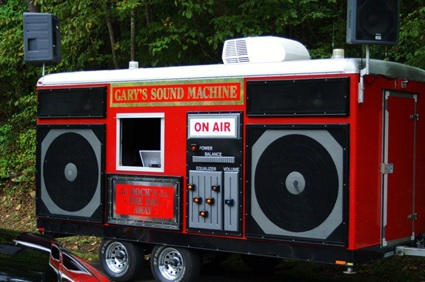FRANKFORT, Ky. – In 2013, Outdoor Life magazine picked Kentucky as the nation’s top spot for trophy white-tailed deer.
The state produced 42 reported entries into the Boone and Crockett Club record book in 2012.
“We’ve got more hunting opportunities now than we’ve ever had,” said Karen Waldrop, wildlife director for the Kentucky Department of Fish and Wildlife Resources. “And we’re nationally recognized as a deer destination.”
While it won’t be known until later if hunters in Kentucky have topped that trophy mark this year, they have certainly enjoyed another record deer harvest.
Kentucky Fish and Wildlife’s website (fw.ky.gov) reported 139,228 deer telechecked as of Dec. 26, up almost 6 percent from last year’s overall harvest record. That total could climb some more.
An unprecedented deer season stands as one of the department’s highlights in 2013.
The ongoing efforts by Kentucky Fish and Wildlife to restore the state’s bobwhite quail population and the expansion of Big Rivers Wildlife Management Area (WMA) and State Forest in western Kentucky as well as new regulations permitting night coyote hunting are all accomplishments of the wildlife division.
In addition, wildlife biologists continued their work with University of Kentucky graduate students on separate research projects focused on the state’s restored elk herd.
“We want to sustain the herd to where we have a huntable population, allow the maximum opportunity for hunters and still have a healthy herd that behaves and acts like an elk herd should,” said Gabe Jenkins, wildlife biologist for Kentucky Fish and Wildlife.
Fieldwork for a four-year research project focused on assessing lifespan, identifying causes of death and tracking movement just wrapped up. The study also identified elk habitat use and food sources.
A cow elk study, started last winter when 40 adult cow elk received radio collars and ear tags, is looking not only at the lifespan of cows but also at the social structure of the herd, reproductive success and mortality factors.
“As an agency, we’re going to continue to try to keep this up for a while,” Jenkins said. “So even when the students are finished with their work, we have some things that we want to look at and address. We’re going to continue to deploy collars and try to keep up with that sample size for a while at least.”
This past year also saw opportunities for bear hunting expand in Kentucky.
The bear zone now encompasses a 16-county region, a separate archery/crossbow season was established and the first bear quota hunt with dogs was initiated. Hunters met their quota of 10 bears during the inaugural archery/crossbow season, with the largest a 375-pound male taken with a crossbow in Wayne County.
Fisheries Division Director Ron Brooks noted the continued efforts to blunt the advancement of Asian carp as one of the division’s key areas of focus in 2013.
Commercial anglers netted almost 83,000 pounds of Asian carp over a two-day tournament held in March on Kentucky and Barkley lakes. Bighead and silver carp reproduce quickly and gorge on plankton that forms the base of the aquatic food chain.
The department also worked to stem the Asian carp’s migration up the Ohio River.
“We contracted fishermen to fish in the Greenup and Meldahl pools primarily,” Brooks said. “We learned a lot about the numbers of Asian carp in those pools and what we need to do moving forward on that leading edge project.”
Trophy catfish in the Ohio River attracted attention this year.
Kentucky Fish and Wildlife engaged in a project with agencies from Indiana and Illinois and two out-of-state universities to determine the population status of blue, flathead and channel catfish in the Ohio River and whether trophy-sized catfish were being overharvested.
“The trophy fishermen, the folks that like to go to the tournaments have all been saying for several years that the number of big fish is going down,” Brooks said. “The pay lake industry, coincidentally, has been going up in terms of interest for having commercial fishermen bring them trophy-sized fish. They’ve got a trophy component at pay lakes now.
“We got a bit concerned that the data we had prior to last year was maybe insufficient to look at size. So we put together a project and it showed us that there were some potential issues in the upper portion of the river.”
In December 2013, the Kentucky Fish and Wildlife Commission voted in favor of new restrictions to limit the number of trophy catfish that can be taken daily by commercial fisherman and sportfish anglers.
Legislative approval is needed before the restrictions become law. If passed, anglers fishing on a sport fishing license would be allowed to keep one blue and flathead catfish more than 35 inches long and one channel catfish more than 28 inches long on the Ohio River with no daily creel limit on fish under those limits.
The past year brought some good news about Lake Cumberland.
The Army Corps of Engineers dropped the water level in the lake in 2007 to ease pressure on Wolf Creek Dam because it was at risk of failing. With repairs to the dam nearing completion, the Corps raised the lake to 705 feet above sea level this past spring and could return it to its normal 723 feet above sea level next year.
“The water level has increased to about half of what we lost in 2007. They did that earlier than was planned,” Brooks said. “That helped the striped bass fishery and probably helped the trout fishery below in the tailwater as well.”
The Fishing In Neighborhoods (FINs) program expanded this in 2013 and now includes 39 lakes, he noted. Also of note was the expansion and renovation of the Pfeiffer Fish Hatchery, one of two hatcheries owned and operated by Kentucky Fish and Wildlife.
“We added eight more acres of ponds and a pretty large, intensive rearing building as well,” Brooks said. “That will help us. Our goal is to increase production out of that hatchery by 20 percent.”
These important 2013 accomplishments will bring better hunting and fishing in the future. They also will improve overall fish and wildlife populations for the enjoyment of all Kentuckians.









